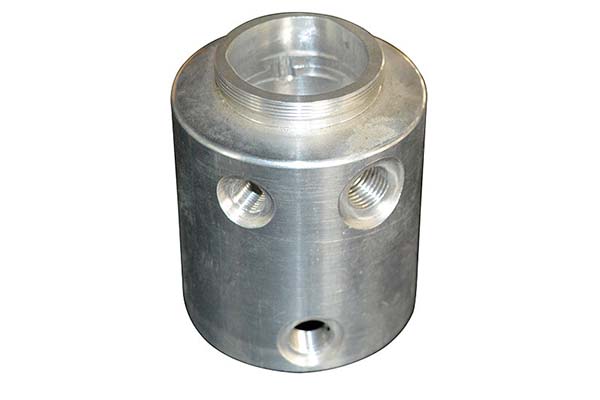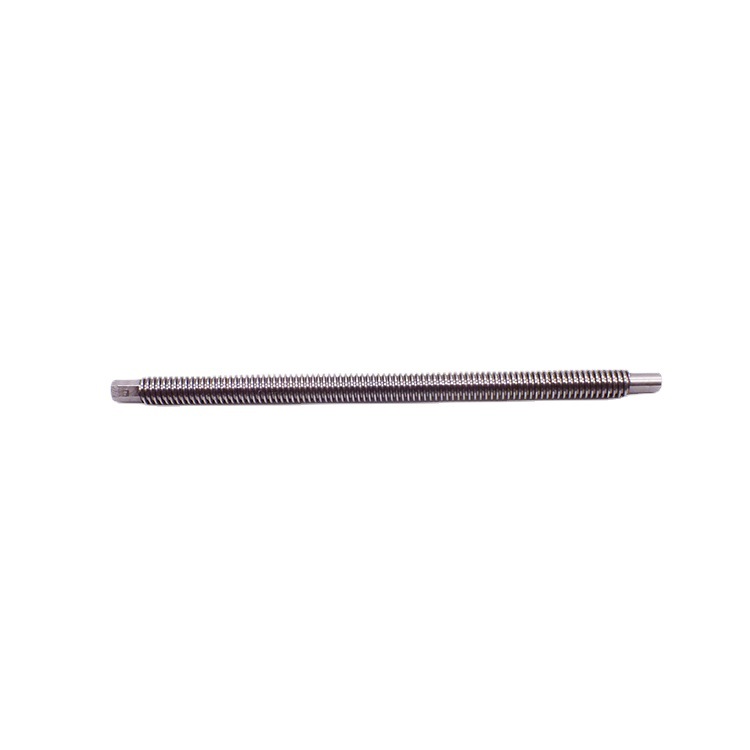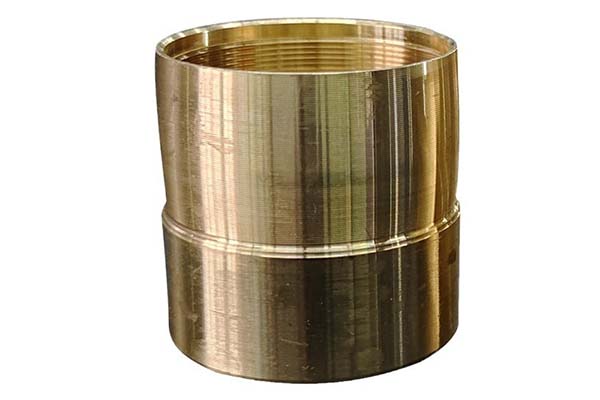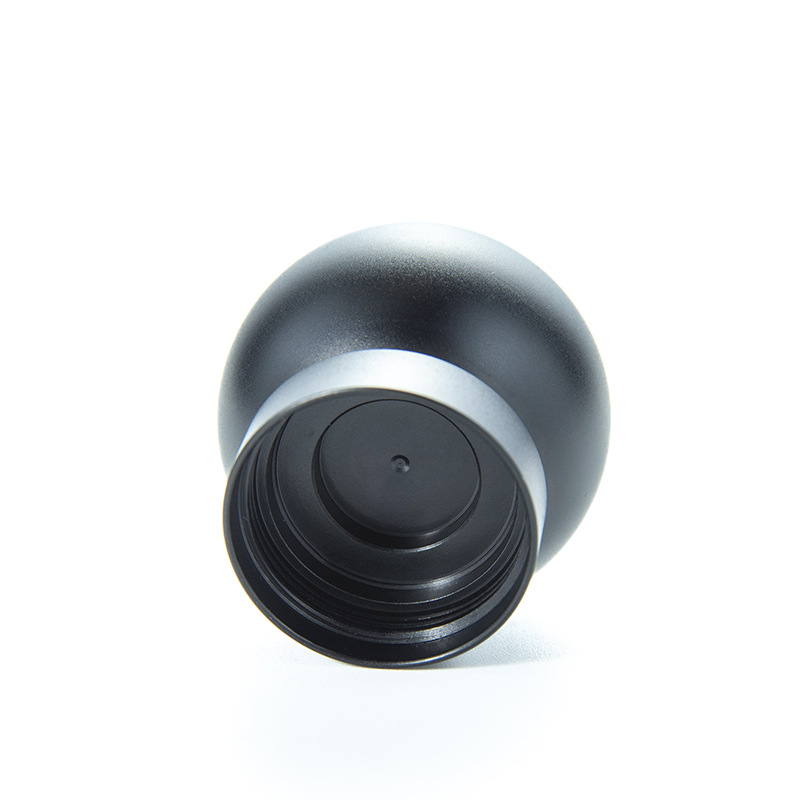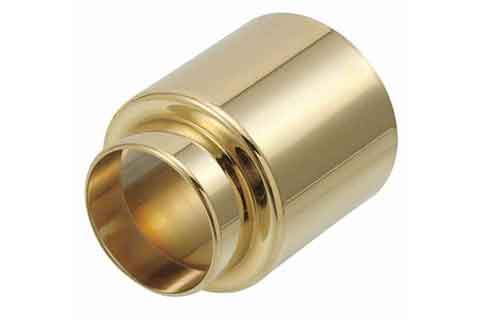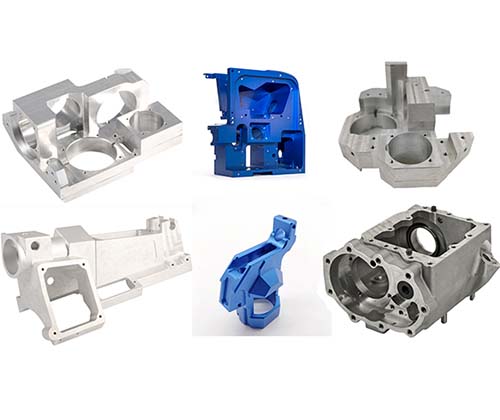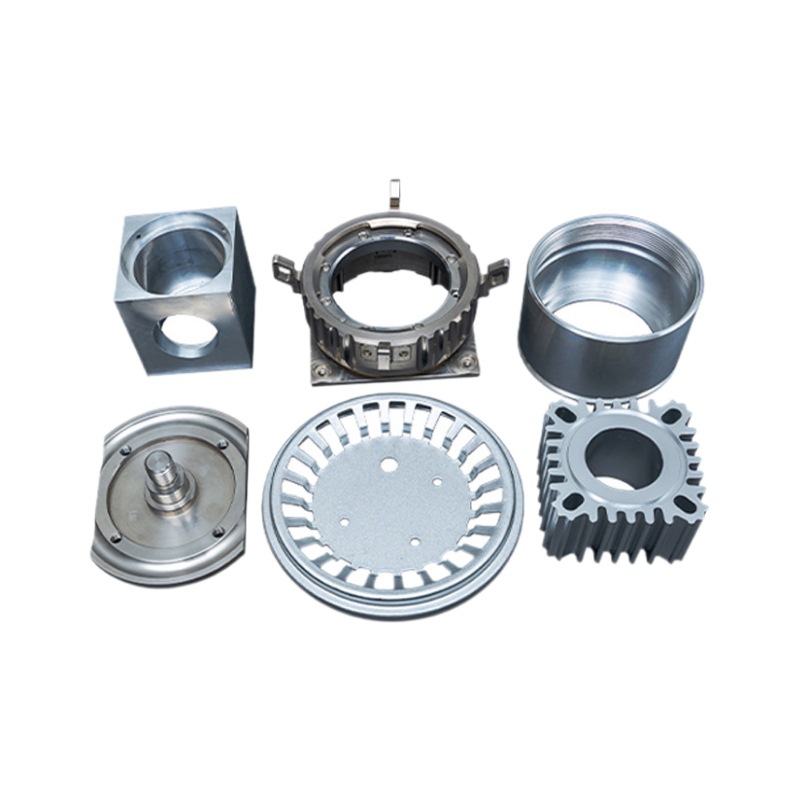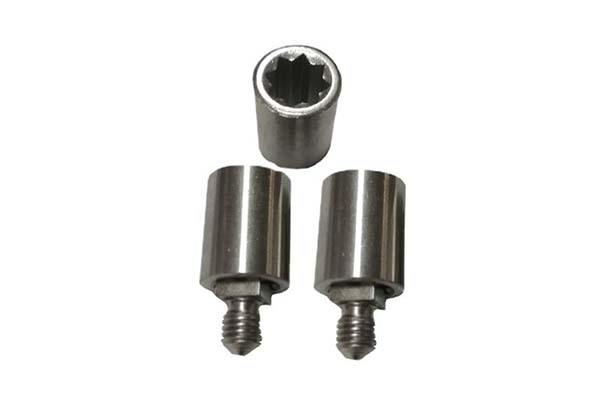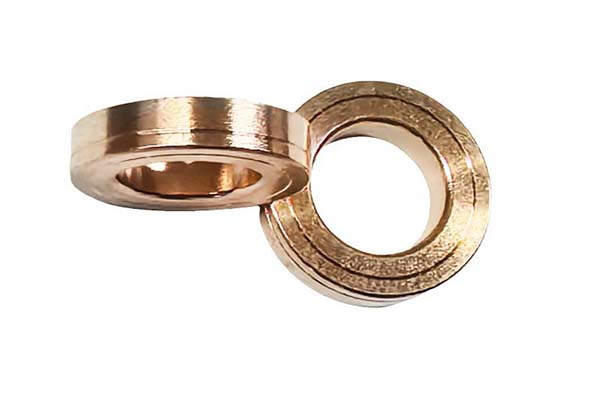Introduction
In the vast and complex landscape of the industrial world, machining manufacturers stand as the unsung heroes, playing a pivotal role that cannot be overstated. They are the driving force behind the creation of countless components and products that form the backbone of modern industries. From the tiniest precision parts in medical devices to the large - scale components used in aerospace and automotive manufacturing, machining manufacturers are responsible for transforming raw materials into highly functional and often highly specialized items.
Consider the automotive industry, for instance. Machining manufacturers produce engine blocks, transmission components, and brake parts with extreme precision. A single engine block requires multiple machining processes such as casting, milling, and drilling to achieve the exact specifications needed for optimal engine performance. Any deviation in the machining process could lead to engine inefficiencies, reduced fuel economy, or even safety issues.
In the aerospace sector, the demands on machining manufacturers are even more stringent. Components like turbine blades for jet engines must be machined to incredibly tight tolerances. These blades operate in extremely high - temperature and high - stress environments, so their precision manufacturing is crucial for the safety and efficiency of aircraft.
As Yigu Technology can see, machining manufacturers are not just simple producers; they are the engines that power industrial excellence. Their work impacts every aspect of our lives, from the technology we use daily to the infrastructure that supports modern society. In the following sections, Yigu Technology will delve deeper into the various factors that contribute to their role as industrial powerhouses, exploring the technologies, processes, and strategies that make them so essential.
Precision in Machining: The Foundation of Excellence
High - Precision Machining Technologies
In the realm of machining, precision is not just a buzzword; it is the very essence of the craft. Machining manufacturers employ a diverse range of high - precision machining technologies to achieve the tight tolerances required by modern industries.
One of the most widely used technologies is Computer Numerical Control (CNC) machining. CNC machines are programmed to execute precise movements, allowing for the creation of complex parts with remarkable accuracy. For Yigu Technology example, in a typical CNC milling operation, the machine can achieve a positioning accuracy of ±0.001 inches. This level of precision is crucial when manufacturing parts for the electronics industry, such as connectors or components for printed circuit boards.
Electrical Discharge Machining (EDM) is another high - precision technology that has found its niche, especially in the production of intricate molds and parts with hard - to - machine materials. EDM works by using electrical discharges to erode the workpiece. The precision of EDM can reach up to ±0.0001 inches in some advanced applications. In the aerospace industry, EDM is used to create turbine blades with internal cooling channels that are too complex to be machined by traditional methods.
When comparing the two technologies in terms of efficiency, CNC machining generally has a higher material removal rate. A high - speed CNC milling machine can remove material at a rate of several cubic inches per minute, depending on the material and cutting tools used. In contrast, EDM is a relatively slower process as it erodes the material in small increments. However, its ability to create complex shapes and work with hard materials makes it indispensable in certain applications.
Precision - Driven Quality Assurance
To ensure that the high - precision machining processes result in top - quality products, machining manufacturers have stringent quality control processes in place. These processes start from the initial design phase and continue throughout the manufacturing process and even after the product is completed.
Most machining manufacturers follow international quality standards such as ISO 9001. This standard requires companies to have a documented quality management system that covers all aspects of production, from supplier management to product testing. In a machining facility, this means that every incoming batch of raw materials is inspected for quality and dimensional accuracy. For Yigu Technology example, if a manufacturer is using steel bars for machining, the bars are checked for their chemical composition, hardness, and straightness.
The use of high - precision measuring equipment is also an integral part of quality assurance. Coordinate Measuring Machines (CMMs) are commonly used to measure the dimensions of machined parts. These machines can measure with an accuracy of up to ±0.00005 inches. By regularly measuring parts during the machining process, manufacturers can detect any deviations from the design specifications early on and make the necessary adjustments.
Data shows that high - precision machining significantly improves product quality and the rate of qualified products. In a study of a machining manufacturer that upgraded its equipment to achieve higher precision, the product rejection rate decreased from 5% to 1%. This not only reduces waste but also improves the overall efficiency of the production process. High - quality products also lead to increased customer satisfaction and fewer warranty claims, which is beneficial for the long - term success of the machining manufacturer.
Efficiency and Productivity: Maximizing Output
Advanced Machining Equipment
In the pursuit of maximizing efficiency and productivity, machining manufacturers rely heavily on advanced machining equipment. High - speed machining centers are a prime example. These state - of - the - art machines can operate at significantly higher spindle speeds compared to traditional machining equipment. For instance, a traditional milling machine might have a maximum spindle speed of around 10,000 RPM (revolutions per minute). In contrast, a high - speed machining center can reach speeds of up to 40,000 RPM or even higher in some cases. This increase in spindle speed allows for much faster material removal rates.
The Yigu Technology table below shows a comparison of the machining speed and daily production capacity between a traditional milling machine and a high - speed machining center when machining aluminum alloy parts:
| Machining Equipment | Machining Speed (mm/min) | Daily Production Capacity (Parts) |
| Traditional Milling Machine | 500 - 1000 | 50 - 80 |
| High - speed Machining Center | 2000 - 5000 | 150 - 200 |
Another example is the use of multi - axis machining equipment. Traditional machining often involves 3 - axis machining, which allows for movement in the X, Y, and Z directions. However, 5 - axis or even 7 - axis machining centers are becoming more prevalent. With 5 - axis machining, the workpiece can be machined from multiple angles without the need for re - clamping. This not only reduces the machining time but also improves the accuracy of complex parts. A case study showed that when manufacturing a complex aerospace component, a 5 - axis machining center reduced the machining time by 30% compared to a 3 - axis machine, while also improving the surface finish quality.
Lean Manufacturing Principles in Machining
Lean manufacturing principles have been widely adopted by machining manufacturers to enhance efficiency and productivity. One of the key aspects of lean manufacturing is waste reduction. In a machining context, waste can come in various forms, such as overproduction, waiting time, excess inventory, and defective products.
For example, machining manufacturers often use the Just - in - Time (JIT) inventory system. In a traditional manufacturing setup, there might be large inventories of raw materials and semi - finished products sitting in the warehouse. This ties up capital and takes up valuable space. With JIT, materials are ordered and delivered exactly when they are needed in the production process. A machining company that implemented JIT saw a 20% reduction in inventory - holding costs within the first year.
Value Stream Mapping (VSM) is another important tool in lean manufacturing. VSM helps machining manufacturers analyze the entire production process from the raw material stage to the finished product. By mapping out all the steps, including value - added and non - value - added activities, manufacturers can identify bottlenecks and areas for improvement. For instance, through VSM, a machining manufacturer discovered that the time spent on moving workpieces between different machining stations was a significant non - value - added activity. By rearranging the layout of the factory and implementing a more efficient material handling system, they were able to reduce the overall production time by 15%.
The use of continuous improvement (Kaizen) teams is also common in machining facilities. These teams, consisting of workers from different departments, regularly meet to discuss and implement small, incremental improvements to the machining process. Over time, these small changes can lead to significant improvements in productivity. Data shows that companies with active Kaizen programs in machining have seen an average annual productivity increase of 5 - 10%.
Customization Capabilities: Meeting Unique Needs
Tailoring Machined Parts
In today's diverse industrial landscape, one - size - fits - all solutions simply do not cut it. Machining manufacturers understand this well and have developed robust customization capabilities to meet the unique needs of their customers.
For Yigu Technology example, in the medical device industry, different types of surgical instruments require very specific designs. A machining manufacturer might receive an order for a custom - designed bone - cutting saw. The process begins with in - depth consultations between the manufacturer's engineering team and the customer. The customer provides detailed requirements such as the size, shape, and the type of bone the saw will be used on. The manufacturer then uses advanced CAD/CAM (Computer - Aided Design/Computer - Aided Manufacturing) software to create a 3D model of the saw.
Once the design is approved, the machining process commences. High - precision CNC machines are used to mill the saw from a suitable metal alloy, ensuring that the edges are sharp and the overall shape is ergonomic for surgeons to use. The customization process also includes surface treatments to enhance the durability and corrosion resistance of the saw.
The advantages of customization are manifold. Firstly, it allows customers to get parts that are perfectly suited to their applications, which can significantly improve the performance of their products. Secondly, customized parts can give companies a competitive edge in the market. For example, a company that offers a unique product with customized components is more likely to attract customers compared to those with generic products.
Case Studies of Custom Machining Success
Let's take a look at a real - world example to understand the value of custom machining. A leading automotive parts supplier approached a machining manufacturer with a problem. They wanted to develop a new line of high - performance engine valves that could withstand higher temperatures and pressures for use in racing cars.
The machining manufacturer's team worked closely with the automotive supplier. After conducting extensive research and simulations, they designed a custom - made engine valve using a new alloy and an innovative internal structure. The manufacturing process involved a combination of precision forging and CNC machining to achieve the desired strength and dimensional accuracy.
The results were remarkable. In testing, the new valves showed a 20% increase in heat resistance and a 15% improvement in fatigue life compared to the previous valves. This not only improved the performance of the racing cars but also reduced the need for frequent valve replacements, saving the automotive supplier both time and money. In terms of business impact, the automotive supplier was able to capture a larger share of the high - performance racing car parts market, increasing their annual revenue by 15% within the first year of introducing the new valves.
Another case involves a company in the electronics industry. They needed custom - made heat sinks for a new line of high - power servers. The machining manufacturer designed heat sinks with a unique fin pattern and a special material composition to maximize heat dissipation. As a result, the servers' operating temperatures were reduced by 10°C, leading to a 30% decrease in server failures due to overheating. This improved the reliability of the servers and increased customer satisfaction for the electronics company.
FAQs
What are the key factors to consider when choosing a machining manufacturer?
When choosing a machining manufacturer, several key factors come into play. Precision is paramount. You need to ensure that the manufacturer can meet the tight tolerances required for your parts. For example, if you are in the aerospace industry, a deviation of even a fraction of a millimeter can be catastrophic. Cost is another crucial factor. While high - quality machining often comes at a price, you should get quotes from multiple manufacturers and compare their pricing structures. Delivery time is also essential. If your production schedule depends on timely receipt of machined parts, a manufacturer with a long lead - time may not be suitable. Additionally, look into the manufacturer's experience in your specific industry and their reputation for quality and reliability.
How can machining manufacturers ensure the quality of custom - made parts?
Machining manufacturers ensure the quality of custom - made parts through multiple means. First, they follow strict quality control standards such as ISO 9001. This involves inspecting incoming raw materials for quality and dimensional accuracy. During the machining process, high - precision measuring equipment like Coordinate Measuring Machines (CMMs) are used to regularly measure the parts. Any deviations from the design specifications are detected early, and adjustments are made. After the parts are machined, they undergo final inspections, including functional and performance tests. Manufacturers also maintain detailed documentation of the entire production process, from design to final inspection, to ensure traceability and quality assurance.
What new trends are emerging in the machining manufacturing industry?
The machining manufacturing industry is witnessing several new trends. One significant trend is the move towards 智能制造 (Intelligent Manufacturing). This involves the integration of advanced technologies such as the Internet of Things (IoT), artificial intelligence, and big data analytics. For example, machines can be connected to a network, allowing real - time monitoring of their performance, predicting maintenance needs, and optimizing machining processes. Green 加工 (Green Machining) is another emerging trend. Manufacturers are increasingly focusing on reducing their environmental impact by using eco - friendly cutting fluids, minimizing energy consumption, and recycling materials. Additive manufacturing is also becoming more prevalent in the machining industry, enabling the production of complex parts with less material waste and in a more cost - effective way in some cases.
